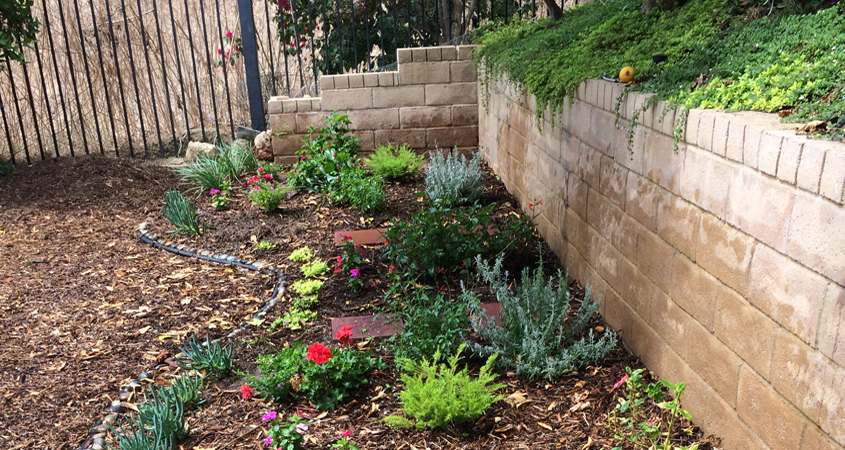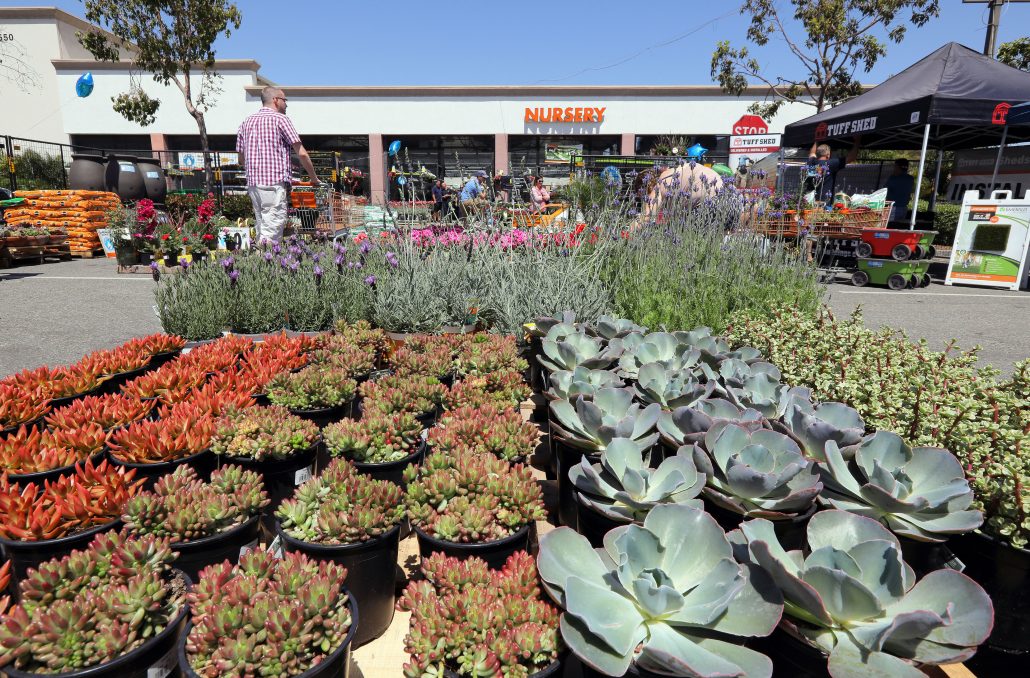 Match your plant choices to the different microclimate areas in your landscaping. A microclimate map helps you make good choices. Photo: Water Authority
Match your plant choices to the different microclimate areas in your landscaping. A microclimate map helps you make good choices. Photo: Water Authority Match Your Landscape Plants To Your Microclimates
A previous Conservation Corner article explained how to map the different types of microclimates present in your landscaping. This information can help homeowners effectively arrange plants in their sustainable landscapes. For the most efficient water use, plants should be grouped together with similar water needs in their favorite microclimate.
In nature, plants that like lots of water are found along the banks of streams, or grouped together at the base of landscape depressions. Plants that need fast-draining soils so roots don’t rot might be found on hillsides. Plants that love lots of sunshine won’t grow in the shade of a tree.
Follow the microclimate map
Look to the Microclimate Map for guidelines on choosing landscape plants. Here is a hypothetical yard with three microclimates:
- A front yard in full sun most of the day.
- A moist, low-lying area in full sun. (This area will retain moisture more than the rest of the yard, so you may want to use it for rain catchment. Hillside areas surrounding the depression are raised slightly, and drain freely.)
- A slightly shady area under the canopy of a neighbor’s large tree, and another one near the front entry to the house.
Three distinct plant communities
Selecting plants for the yard in this example will require at least three different groupings:
- Sun-loving plants that like their roots dry and thrive in faster-draining soil
- Sun-loving plants that can tolerate “wet feet” in winter months, and thrive in heavier clay soils
- Plants that can tolerate dry, shaded areas
There is another consideration before heading to the local nursery or garden center: How will these plants be irrigated? Check the Plant Factors for each of the plants to make sure their water needs are all similar in each area. Read this previous Conservation Corner story for information about Plant Factors.
Plants speak Latin

Many plants have similar names. Rely on their Latin names to ensure you are getting the correct plant for your landscaping plan. Photo: Water Authority
Many plants have similar common names in English. Shopping for plants by their common names can lead to confusion between two very different plants. Instead, the best way to shop for plants is to use the Latin name. This reduces surprises in your landscaping.
This article was inspired by the 71-page Sustainable Landscapes Program guidebook available at SustainableLandscapesSD.org. The Water Authority and its partners also offer other great resources for landscaping upgrades, including free WaterSmart classes at WaterSmartSD.org.



